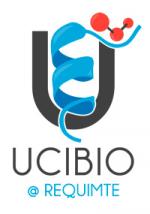The significance of the balance between intracellular glutathione and polyethylene glycol (PEG) for successful siRNA release from gold nanoparticles
- Citation:
- McCully, Mark, Yulan Hernandez, João Conde, Pedro V. Baptista, Jesus M. de la Fuente, Andrew Hursthouse, and David St. "The significance of the balance between intracellular glutathione and polyethylene glycol (PEG) for successful siRNA release from gold nanoparticles." Nano Research (2015).
Abstract:
The therapeutic promise of small interfering RNAs (siRNAs) for specific gene silencing is dependent on the
successful delivery of functional siRNAs to the cell cytoplasm. Their conjugation to an established delivery
platform, such as gold nanoparticles, offers a huge potential for treating diseases and advancing our
understanding of cellular processes. The success or failure is dependent on both the uptake of the nanoparticlesinto the cells and subsequent intracellular release of the functional siRNA. In this paper, utilising gold nanoparticle siRNA-mediated delivery against C-MYC, we aimed to determine if we could achieve knockdown in a cancer cell line with low levels of intracellular glutathione, and determine the influence, if any, of polyethylene glycol (PEG) ligand density on knockdown, with a view to determine the optimal nanoparticle
design to achieve C-MYC knockdown. We demonstrate that, regardless of the PEG density, knockdown in cells with relatively low glutathione levels can be achieved, and also the possible effect of steric hindrance in terms of PEG on the availability of the siRNA for cleavage in the intracellular environment. Gold nanoparticle uptake was demonstrated via transmission electron microscopy and mass spectroscopy, whilst knockdown was determined at the protein and physiological levels (cells in S-phase) by in-cell westerns and BrdU incorporation, respectively.


